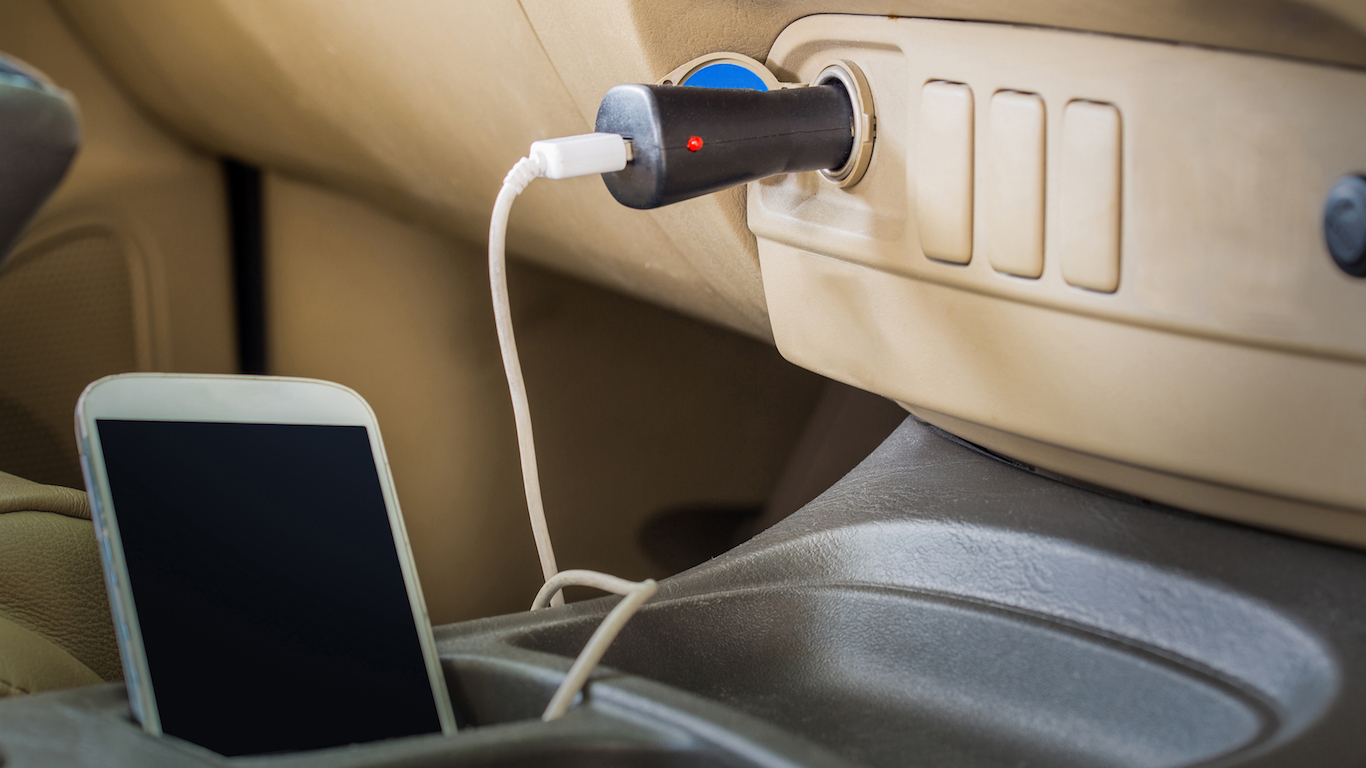Special Report
12 Gifts Americans Spend the Most on for Father's Day

Published:
Last Updated:

Advertisers are prodding consumers to buy power tools and gardening equipment for dads this Father’s Day. However, those categories will likely pale in comparison to planned spending on dinner or brunch for dads by consumers, according to data from the National Retail Federation.
Taking dad out to eat is forecast to log the most sales at $3.3 billion among 12 categories surveyed by the NRF. Clothing and gift certificates were next at $2.2 billion and consumer electronics clocked in at $1.8 billion.
Father’s Day retail spending has soared 55% in the last 10 years and is expected to set a record of $15.5 billion this year, according to the NRF, which has been tracking data for 15 years. The current forecast translates into $136.75 spent on each dad. About 68% of consumers plan to spend the same amount on dad this year as in 2016.
Click here to see the 12 gifts Americans spend the most on for Father’s Day.
By percentage, the leading category is greeting cards (64%), followed by dinner or brunch (48%), clothes (46.1%-plenty of neck ties in this category), gift cards (42.6%) and books or CDs (23.9%).
Greeting cards only account for about $800 million, the fifth-biggest category by expected sales, according to the NRF.
Consumers will shop for dad at department stores (39.9%), online (33.7%), and discount stores (25.7%).
To put Father’s Day spending in perspective, Mother’s Day spending was expected to total more than $23 billion in 2017. Spending on Father’s Day trails other special events tracked by NRF such as graduation ($35.8 billion), Easter ($18.4 billion) and Valentine’s Day ($18.2 billion).

12. Other
> Planned spending: $400 million
> Share of shoppers planning to buy: 17.1% (the fifth lowest)
[in-text-ad]

11. Automotive accessories
> Planned spending: $700 million
> Share of shoppers planning to buy: 16.1% (the lowest)

10. Books or CDs
> Planned spending: $700 million
> Share of shoppers planning to buy: 23.9% (the fifth highest)

9. Tools or appliances
> Planned spending: $800 million
> Share of shoppers planning to buy: 16.3% (the third lowest)
[in-text-ad]

8. Sporting goods or leisure items
> Planned spending: $800 million
> Share of shoppers planning to buy: 16.7% (the fourth lowest)

7. Home improvement or gardening supplies
> Planned spending: $900 million
> Share of shoppers planning to buy: 16.2% (the second lowest)

6. Personal care items
> Planned spending: $900 million
> Share of shoppers planning to buy: 20.9% (the sixth lowest)
[in-text-ad]

5. Greeting cards
> Planned spending: $900 million
> Share of shoppers planning to buy: 64.3% (the highest)

4. Consumer electronics or related accessories
> Planned spending: $1.8 billion
> Share of shoppers planning to buy: 21.2% (the sixth highest)

3. Gift certificates
> Planned spending: $2.2 billion
> Share of shoppers planning to buy: 42.6% (the fourth highest)
[in-text-ad]

2. Clothing
> Planned spending: $2.2 billion
> Share of shoppers planning to buy: 46.1% (the third highest)

1. Special outing
> Planned spending: $3.3 billion
> Share of shoppers planning to buy: 48.0% (the second highest)
A financial advisor can help you understand the advantages and disadvantages of investment properties. Finding a qualified financial advisor doesn’t have to be hard. SmartAsset’s free tool matches you with up to three financial advisors who serve your area, and you can interview your advisor matches at no cost to decide which one is right for you. If you’re ready to find an advisor who can help you achieve your financial goals, get started now.
Investing in real estate can diversify your portfolio. But expanding your horizons may add additional costs. If you’re an investor looking to minimize expenses, consider checking out online brokerages. They often offer low investment fees, helping you maximize your profit.
Thank you for reading! Have some feedback for us?
Contact the 24/7 Wall St. editorial team.